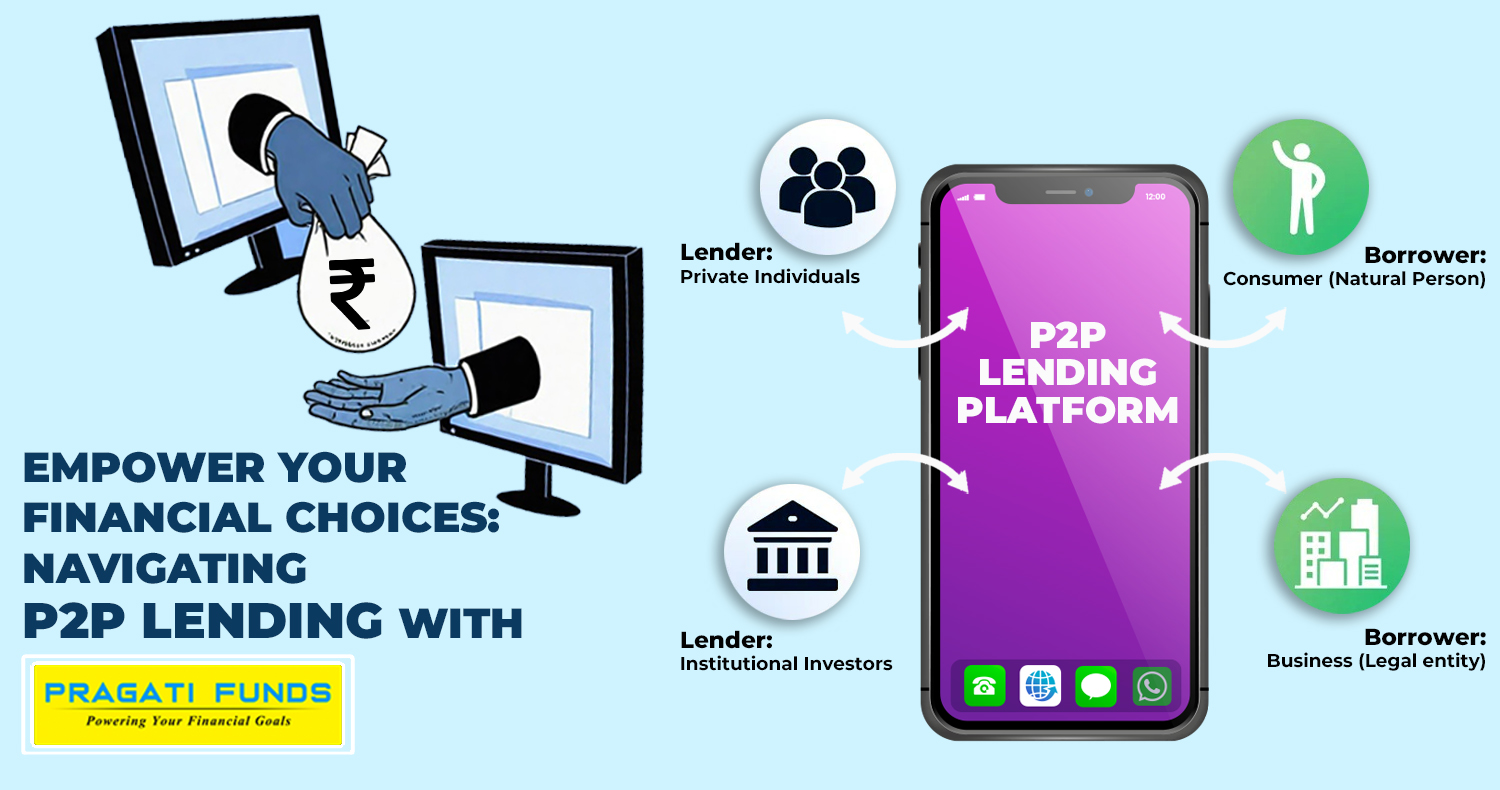- +91 9725410042
-



Are you seeking financial assistance but feeling constrained by traditional lending avenues? Enter the realm of peer-to-peer (P2P) lending, a transformative solution worthy of exploration.
If you've encountered hurdles securing a loan due to stringent credit score requirements, P2P lending could offer the relief you've been seeking. In this blog, we'll delve into the dynamics of peer-to-peer lending in India, equipping you with insights to make informed decisions before diving into this innovative financial landscape.
Wondering what exactly P2P lending entails and how it could benefit you? Let's unravel its essence.
Peer-to-peer lending, also known as social lending, presents an alternative avenue for accessing funds sans the involvement of traditional banking institutions. It operates through online platforms, facilitating direct connections between lenders and borrowers.
This lending model proves particularly advantageous for individuals grappling with poor credit scores, who often encounter obstacles securing funds through conventional means. However, it's essential to acknowledge that borrowers may encounter comparatively higher interest rates as part of the trade-off.
On the flip side, lenders eyeing enhanced returns find P2P lending appealing vis-à-vis traditional savings avenues or other investment channels, notwithstanding the heightened risk involved. As the popularity of peer-to-peer lending burgeons, numerous online platforms have emerged, streamlining the borrowing process.
Curious about the inner workings of peer-to-peer lending? Let's demystify the process.
Peer-to-peer lending operates through dedicated online platforms, serving as rendezvous points for lenders and borrowers alike. To participate, users must register on these platforms, typically entailing the provision of basic personal information and payment of a nominal registration fee.
For borrowers, furnishing additional details such as credit history, income levels, and employment status is imperative. Although P2P lending doesn't hinge solely on credit scores, a robust credit profile may potentially secure lower interest rates.
Post-registration, borrowers specify their desired loan amount and consent to potential interest rates.
At this juncture, lenders peruse loan listings, determining whether to fund them.
Upon approval, borrowers receive the loan amount, with funding often stemming from single or multiple lenders, each holding a share in the loan.
Repayments are facilitated through the P2P platform, ensuring timely reimbursements. In cases involving multiple lenders, repayments are automatically apportioned based on their respective loan shares.
Initially leveraged primarily by borrowers grappling with traditional loan roadblocks, P2P platforms have witnessed a paradigm shift, with even creditworthy individuals gravitating towards this alternative. This shift stems from the potential to secure lower interest rates compared to conventional banking channels.
Who can partake as lenders on P2P platforms? Here's a comprehensive outlook:
Any individual holding a valid PAN Card and an Indian bank account can partake as a lender on P2P platforms. This encompasses entities such as HUFs, partnership firms, or any other legal entity, incorporated or otherwise.
Navigating P2P lending involves adherence to certain regulatory and procedural nuances:
The maximum loan tenure lenders can offer is 3 years.
Lenders' total exposure across all P2P platforms is capped at Rs. 50 lakhs.
Borrowers cannot surpass Rs. 10 lakhs in cumulative loans from all P2P platforms.
Individual lenders cannot extend more than Rs. 50,000 to a single borrower.
Regulatory Oversight
Despite the inherent risks associated with P2P platforms, regulatory frameworks ensure their safety:
P2P platforms fall under the regulatory purview of the Reserve Bank of India.
Regulatory guidelines are encapsulated in the Master Directions for NBFC Peer-to-Peer Lending Platforms, issued in 2017.
Key regulatory stipulations include obtaining an RBI Certificate of Registration, registration with the Department of Non-Banking Regulation in Mumbai, maintaining a maximum leverage ratio of 2, and upholding a minimum net fund of Rs. 2 crores, among others.
Understanding the tax ramifications of P2P lending is crucial:
Interest income is taxable, whereas the principal amount remains exempt from taxation.
TDS (Tax Deducted at Source) on interest applies under specified circumstances.
P2P lending platforms act as intermediaries, with borrowers responsible for complying with TDS provisions.
P2P lending has revolutionized the borrowing landscape, offering a convenient crowdfunding platform for diverse borrower profiles.
For lenders, it presents an enticing investment avenue with the potential for lucrative returns. Registering with reputable and RBI-regulated P2P platforms unlocks seamless access to funds. However, exercising due diligence and considering associated interest rates and charges remain imperative.
Embark on your P2P lending journey armed with knowledge, and make informed decisions to maximize this burgeoning financial opportunity. Partner with Pragati Funds to navigate the P2P lending landscape with confidence and expertise. For assistance call: +91 94277 28842 / 97254 10042 or visit our website: https://www.pragatifunds.com/
Sign up to receive the latest news and promotions.
We are Distributors of Financial Products in India & NOT the Investment Advisors as per SEBI guidelines.
Mutual Fund Investments are subject to market risks. Please read all offer documents carefully before investing. There is NO Guarantee of any Returns in the Mutual Fund products.
"AMFI-registered Mutual Fund Distributor"
"ARN - 284652"
Date of initial registration 24th May 2004 valid till 26th Dec 2025
315, Pancham Icon,
Beside vasna DMart,
Vadodara - 390007
02652255191, +917622022853, +919725410042
Copyright © Pragati Funds 2021. All rights reserved.
Risk Factors – Investments in Mutual Funds are subject to Market Risks. Read all scheme related documents carefully before investing. Mutual Fund Schemes do not assure or guarantee any returns. Past performances of any Mutual Fund Scheme may or may not be sustained in future. There is no guarantee that the investment objective of any suggested scheme shall be achieved. All existing and prospective investors are advised to check and evaluate the Exit loads and other cost structure (TER) applicable at the time of making the investment before finalizing on any investment decision for Mutual Funds schemes. We deal in Regular Plans only for Mutual Fund Schemes and earn a Trailing Commission on client investments. Disclosure For Commission earnings is made to clients at the time of investments.
Important Links | Disclaimer | Disclosure | Privacy Policy | SID/SAI/KIM | Code of Conduct | SEBI Circulars | AMFI Risk Factors